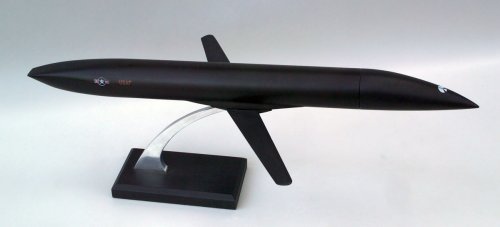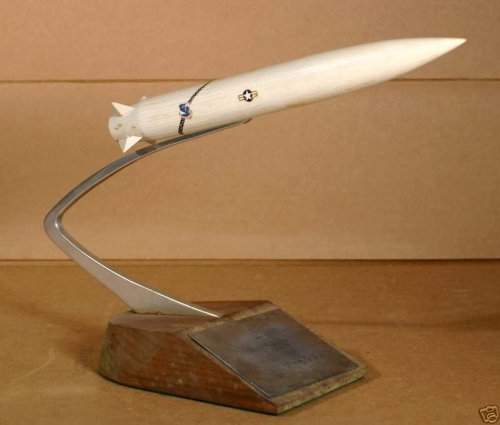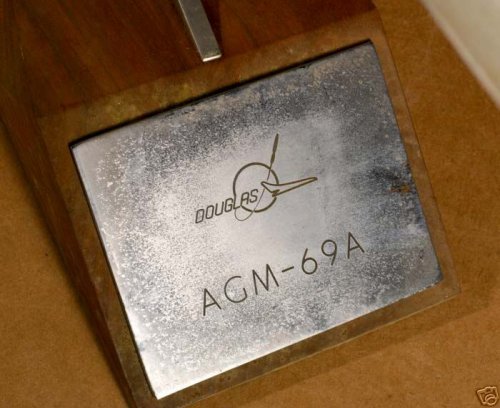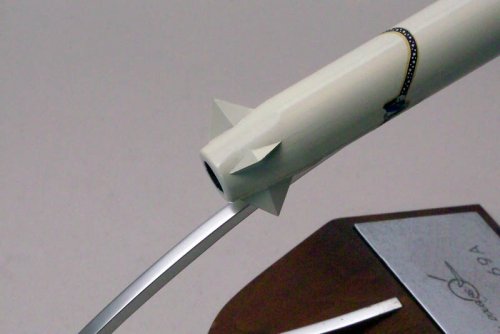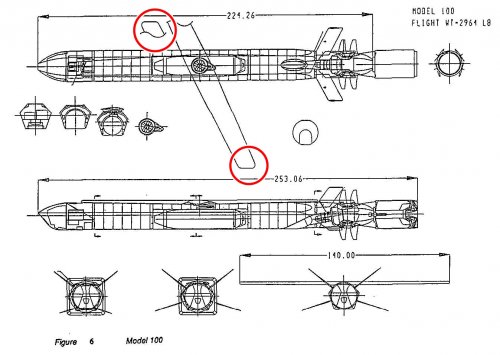- Joined
- 31 May 2009
- Messages
- 1,154
- Reaction score
- 595
Attached are photos of an oblique-wing, stealthy cruise missile concept model from Rockwell International. The NACA flush air intake becomes unobstructed by the wing after the missile is released and the wing opens into position. The payload nose section (warhead?) is removable, so I presume there were others, possibly recon packages. Date is unknown, but the red stencils and high visibility insignia remind me of some old, short-lived SR-71 markings.
Does anyone have any info on this missile project? Thank you.
Does anyone have any info on this missile project? Thank you.

